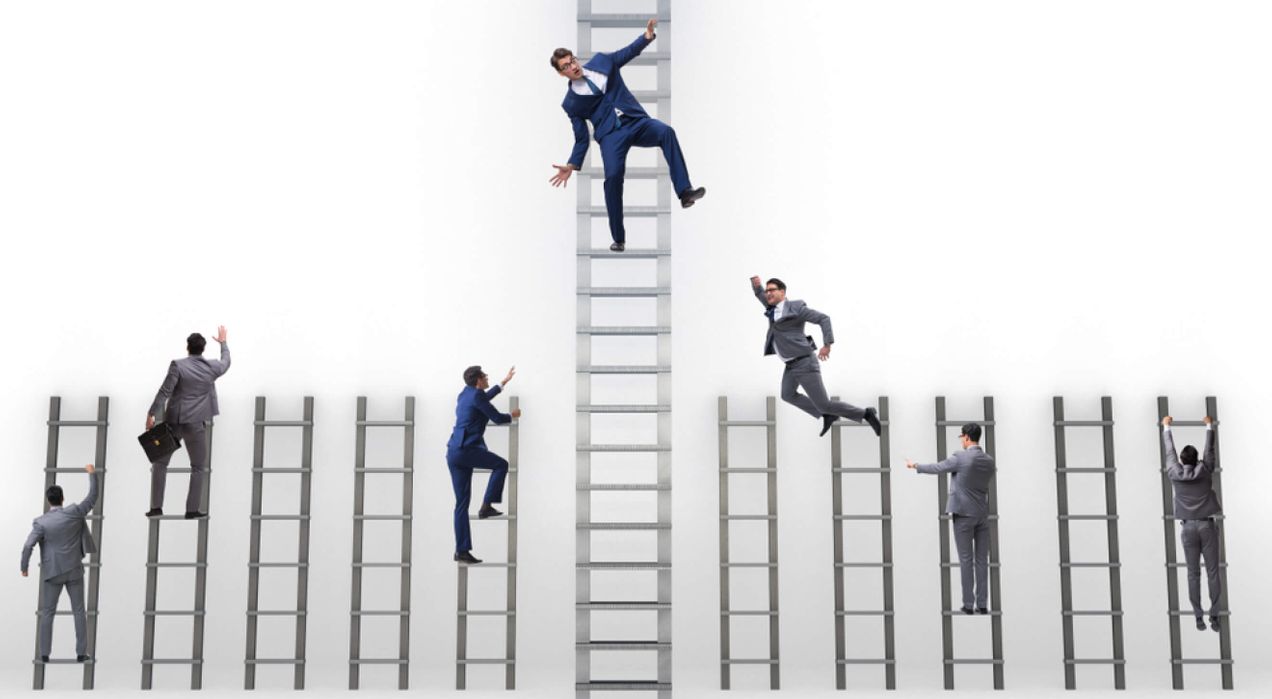Unconscious bias: Definition, examples, and tips to overcome them in the workplace
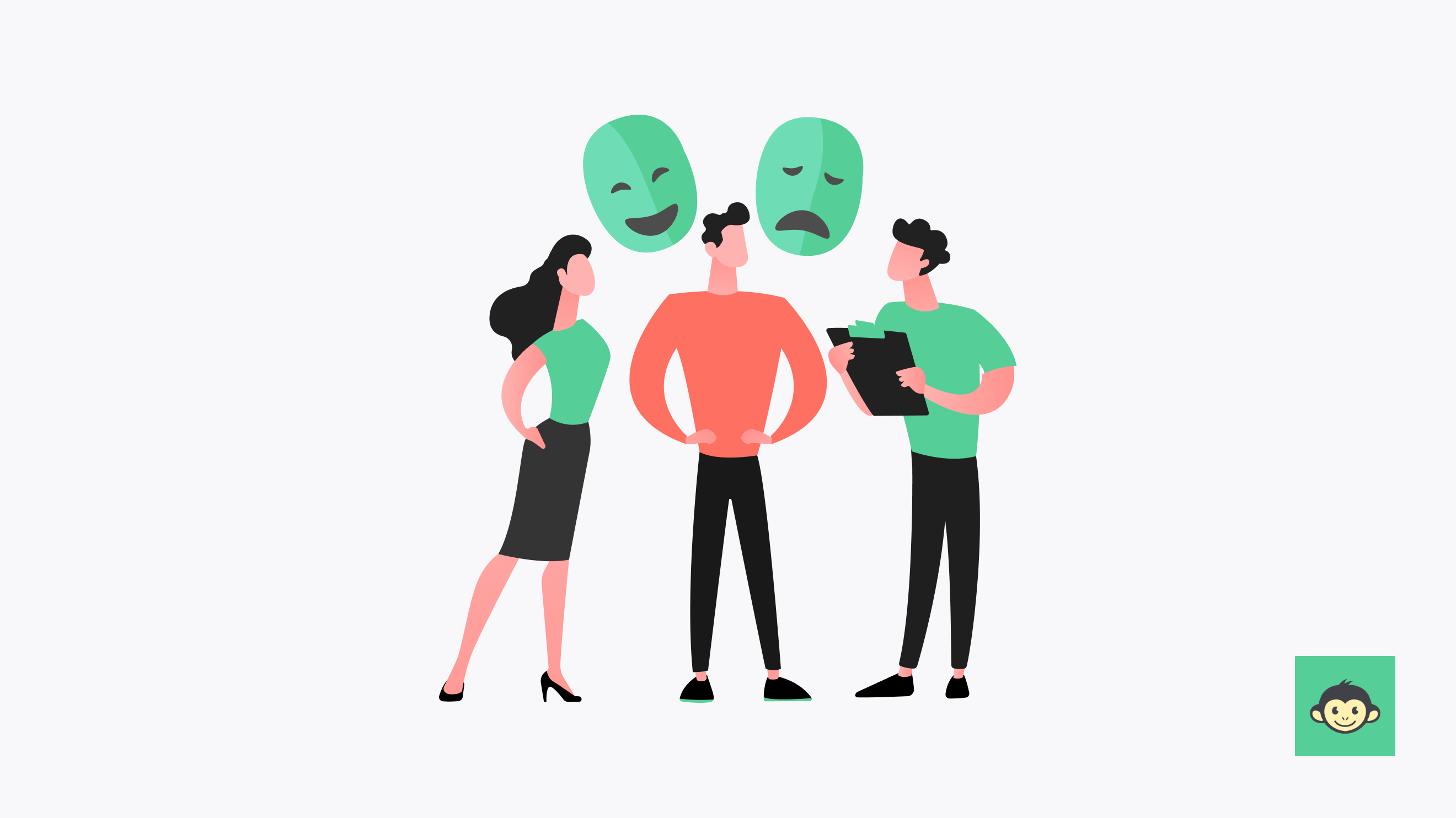
Addressing unconscious bias has emerged as a crucial endeavor for fostering diversity, equity, and inclusivity in every organization.
Unconscious bias, often lurking beneath the surface of human cognition, can significantly impact decision-making, interactions, and organizational culture. As a testament to its significance, a study revealed that even well-intentioned individuals exhibit biases that affect hiring choices.
This comprehensive guide unravels the concept of unconscious bias, delving into its definition, real-world examples, and pragmatic strategies to overcome it. From recruitment practices to day-to-day interactions, understanding and mitigating unconscious biases is vital for creating a workplace that values the unique contributions of every individual.
What is unconscious bias?
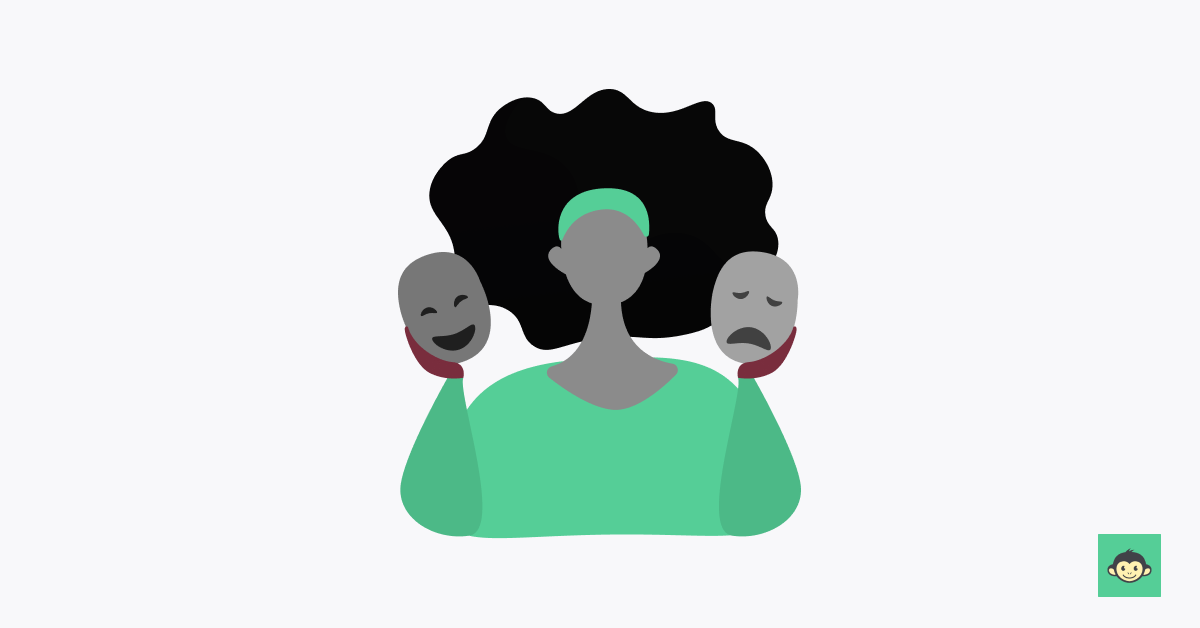
Unconscious bias refers to the automatic and involuntary mental processes that lead individuals to make judgments or decisions influenced by preconceived notions, stereotypes, or attitudes toward certain groups or individuals.
These biases are typically formed based on cultural, societal, and personal experiences, often occurring without conscious awareness.
Unconscious bias can impact interactions, decisions, and perceptions, affecting various aspects of life, including hiring, promotions, and workplace dynamics. Recognizing and addressing unconscious bias is crucial for fostering inclusivity, diversity, and equitable treatment in all areas of society.
Unconscious vs. explicit bias
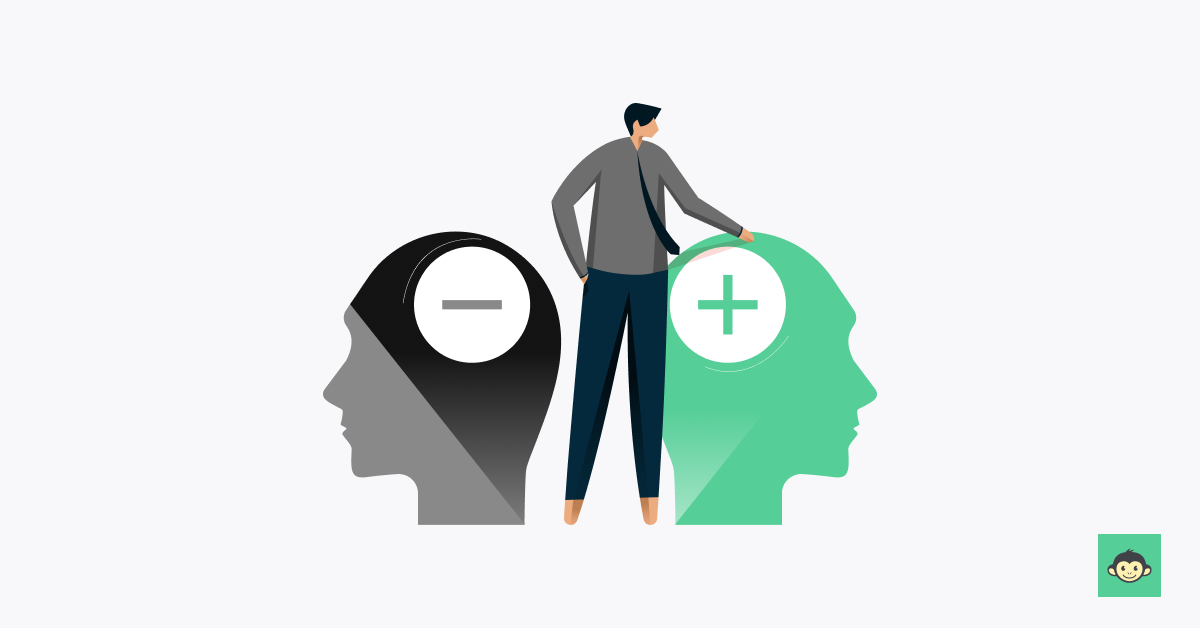
Unconscious and explicit biases are two distinct but interconnected forms of bias that influence human decision-making and perceptions.
Unconscious bias: Unconscious bias, also known as implicit bias, refers to subconscious attitudes or stereotypes that affect our judgments and actions without our awareness. These biases are often ingrained through societal and cultural influences, and they can shape our interactions and decisions unintentionally.
Explicit bias: Explicit bias, on the other hand, is the conscious and deliberate expression of bias towards a particular group or individual. Unlike unconscious bias, explicit bias is openly acknowledged and can manifest in explicit statements, actions, or beliefs that reflect prejudiced attitudes.
Key differences:
- Awareness: Unconscious bias operates beneath the conscious level, while explicit bias is consciously acknowledged.
- Control: Unconscious bias is automatic and involuntary, while explicit bias involves deliberate thought and choice.
- Expression: Unconscious bias may result in unintentional actions, whereas explicit bias involves the intentional expression of biased beliefs.
- Social Desirability: Explicit bias may be influenced by social desirability and the need to conform to societal norms, while unconscious bias is less affected by this factor.
- Mitigation: Both types of bias can be mitigated through awareness, education, and training, but addressing unconscious gender bias often requires more effort due to its hidden nature.
Unconscious bias operates beneath awareness, while explicit combat unconscious bias often involves conscious acknowledgment. Understanding these differences is essential for addressing biases in various contexts, and promoting fairness, diversity, and inclusion.
What causes unconscious bias?
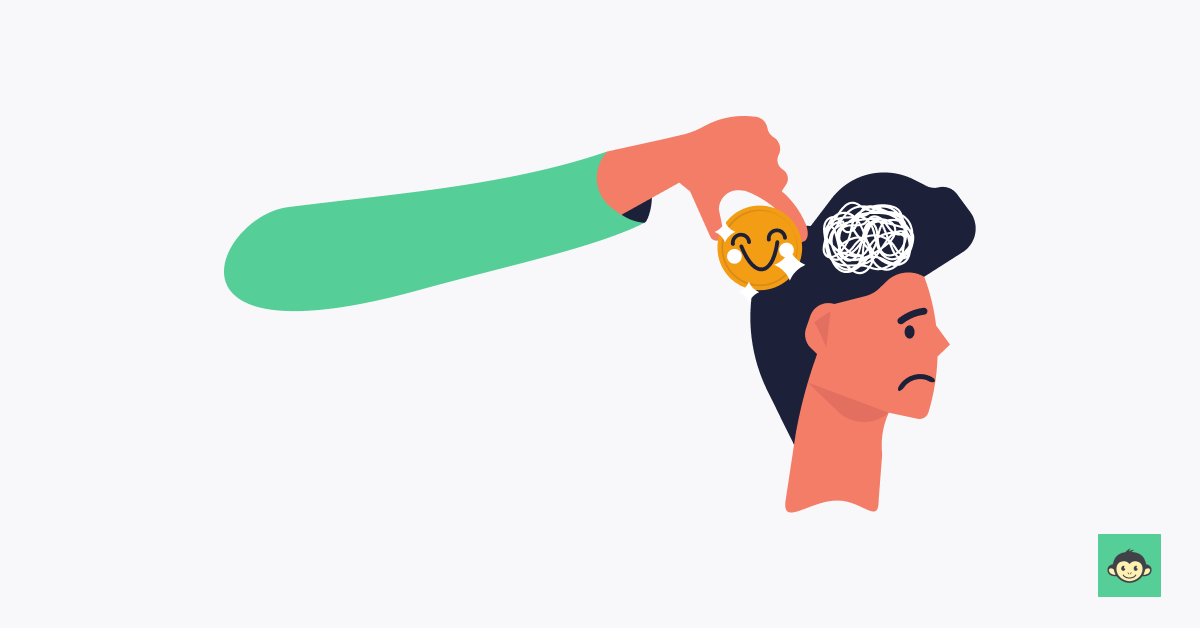
Unconscious bias is a complex phenomenon influenced by various psychological, social, and cognitive factors:
Cognitive processes
Our brains rely on heuristics (mental shortcuts) to process vast amounts of information quickly. These shortcuts, while efficient, can lead to biases as they draw on past experiences and stereotypes.
Socialization
Cultural norms, upbringing, and societal influences shape our perspectives and attitudes from an early age, instilling biases that become ingrained over time.
Media and stereotypes
Exposure to media, which often perpetuates stereotypes and portrayals of certain groups, can reinforce biases by reinforcing certain associations.
Limited exposure
Lack of exposure to diverse groups and experiences can lead to biases due to a lack of understanding and familiarity.
In-group favoritism
Individuals tend to favor those they perceive as similar or part of their group, leading to biases against those perceived as outsiders.
Fear of the unknown
Humans are wired to be cautious of the unfamiliar, leading to biases against individuals or groups that are different from what we know.
Systemic factors
Societal structures and institutional practices can perpetuate biases, as they are often built on historical inequalities and discriminatory practices. Recognizing these underlying causes is crucial in addressing unconscious bias.
Confirmation bias
People have a tendency to search for, interpret, and remember information that confirms their pre-existing beliefs or values. This can lead to reinforcing stereotypes and ignoring information that contradicts existing biases.
Implicit associations
Over time, individuals form implicit associations between different concepts, such as linking certain demographic groups with specific traits or behaviors. These subconscious associations can influence judgments and decisions without conscious awareness.
Emotional responses
Our emotional reactions to certain stimuli can trigger biases, as feelings such as fear, anger, or happiness can influence our perceptions and decisions without us realizing it.
Workplace environment
The culture and dynamics within a workplace can contribute to unconscious biases, as norms, behaviors, and interactions within an organization can shape employees' attitudes and actions towards others.
By fostering awareness, promoting diversity, and engaging in continuous learning, individuals and organizations can work towards mitigating the impact of unconscious biases and fostering a more inclusive and equitable environment.
Why is it important to tackle unconscious bias in the workplace?
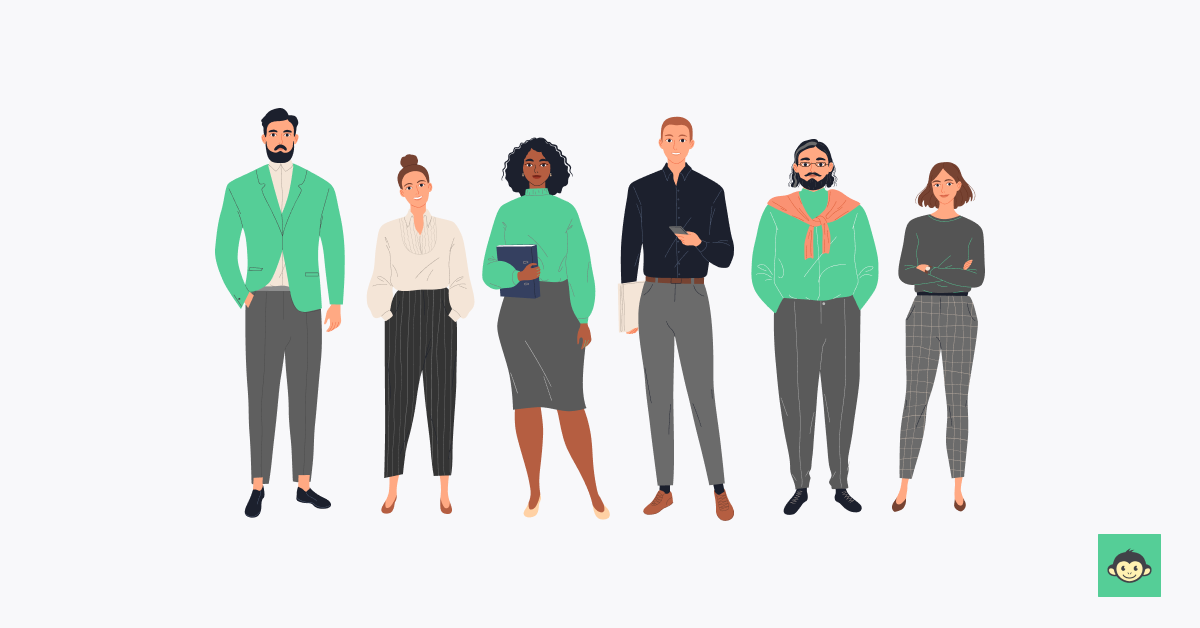
Tackling unconscious bias in the workplace is of paramount importance due to its far-reaching impact on individuals, teams, and the overall organizational culture:
- Fairness and equity: Unconscious bias can lead to unequal treatment, limiting opportunities for underrepresented groups and perpetuating inequality.
- Diversity and inclusion: Bias hinders the creation of diverse and inclusive teams, stifling innovation and creativity that stems from diverse perspectives.
- Talent retention: Biased practices can drive away talented employees who feel marginalized, resulting in turnover and loss of valuable expertise.
- Employee engagement: Addressing bias fosters a sense of belonging, enhancing employee morale, motivation, and engagement.
- Collaboration: Tackling bias promotes open communication and collaboration, enabling teams to work harmoniously and leverage diverse strengths.
- Decision-making: Unbiased decisions lead to better outcomes by considering a wider range of perspectives, contributing to informed choices.
- Reputation and brand: Organizations that actively combat bias are seen as progressive and ethical, enhancing their reputation and attractiveness to potential employees.
- Legal compliance: Failure to address bias can lead to legal implications, impacting the organization's credibility and financial stability.
- Innovation: Diverse and inclusive workplaces encourage innovative thinking by fostering an environment where varied viewpoints are respected.
- Market success: Understanding diverse customer needs and preferences is crucial in today's global marketplace, requiring diverse teams to drive market success.
- Leadership development: Addressing bias helps identify and nurture leaders based on merit, contributing to a more effective leadership pipeline.
- Corporate social responsibility: Organizations have a responsibility to contribute to societal progress by promoting equal opportunities and fairness.
- Positive work environment: A bias-free workplace enhances camaraderie, trust, and a positive work atmosphere, leading to increased job satisfaction.
- Long-term growth: Organizations that prioritize and understand unconscious bias and mitigation are better positioned for long-term growth and resilience.
By actively addressing unconscious bias, organizations foster an environment that values diversity, promotes inclusivity, and cultivates the potential of every individual.
This not only benefits employees but also leads to improved organizational performance, innovation, and sustainability.
Mental health
Reducing bias in the workplace can significantly improve the mental health of employees by creating a more supportive and respectful environment, reducing stress and anxiety related to discrimination and bias.
Economic performance
A workplace that effectively manages and reduces unconscious bias is likely to see improved economic performance. Diverse teams bring varied insights, which can lead to better decision-making, increased productivity, and ultimately, higher profitability.
25 Unconscious bias examples that you should be aware of
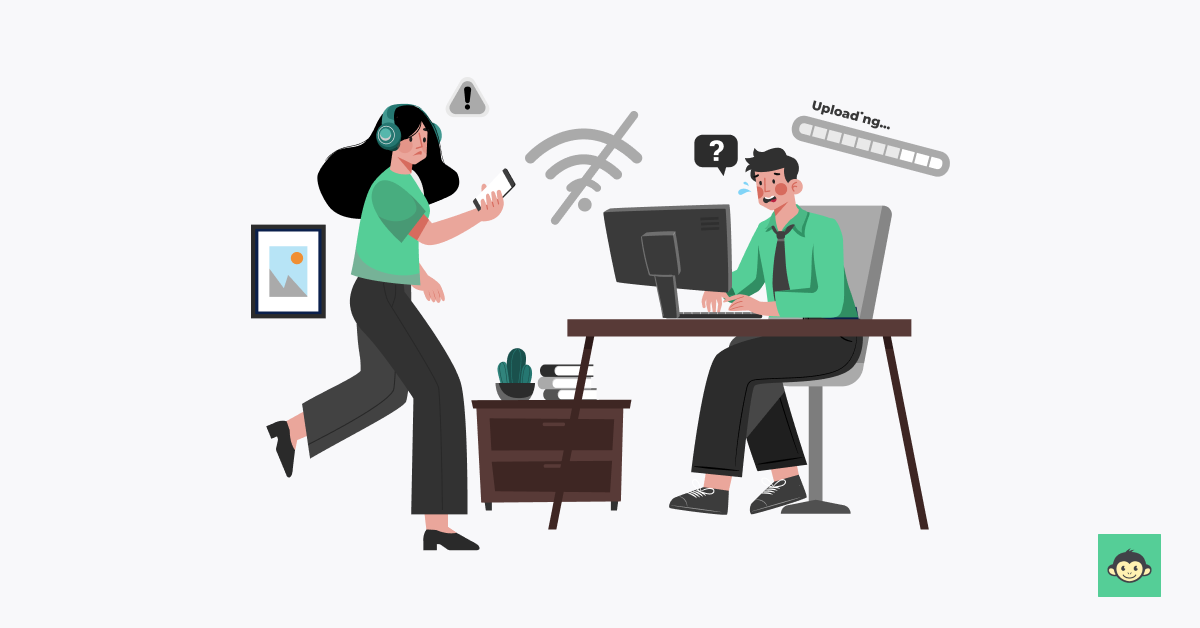
1. Cognitive bias
Cognitive bias is where individuals tend to seek, interpret, and remember information in a way that confirms their pre-existing beliefs, own opinions or expectations. This bias leads people to actively search for evidence that aligns with what they already believe while ignoring or dismissing information that contradicts their viewpoints.
Confirmation bias can result in closed-mindedness, as individuals become less receptive to new ideas or perspectives that challenge their existing notions. It can reinforce echo chambers where people are surrounded by like-minded individuals and only exposed to information that supports their views.
This bias can lead to poor decision-making, as individuals may overlook valuable insights or alternative viewpoints that could lead to better outcomes.
In today's information-rich age, confirmation bias can be exacerbated by social media algorithms and tailored content that reinforce existing beliefs. Recognizing confirmation bias is crucial for critical thinking and effective decision-making.
To counter this bias, individuals should actively seek out diverse perspectives, engage in open dialogue, and consciously evaluate information with an objective mindset, allowing for a more comprehensive and balanced understanding of complex issues.
2. Stereotyping
Stereotyping is a cognitive process where individuals assign generalized beliefs or assumptions about a particular group of people based on their perceived characteristics. These characteristics might include traits, behaviors, or attributes that are believed to be shared by members of the group.
While stereotyping can sometimes be based on limited observations or experiences, it often oversimplifies and ignores the diversity that exists within the group.
Stereotyping can have significant implications, as it can lead to unfair judgments, biased decisions, and perpetuate inequalities. It influences how we perceive and interact with others, affecting our attitudes and behaviors toward them. Stereotypes can be deeply ingrained, stemming from societal norms, cultural influences, and personal experiences.
Addressing stereotypes requires conscious effort and awareness. It's important to recognize that individuals within a group are unique and should not be defined solely by the stereotypes associated with their identity.
Engaging in open-minded conversations, seeking diverse perspectives, and challenging one's assumptions are steps that can help break down stereotypes and foster a more inclusive and respectful environment where people are valued for their individuality rather than being constrained by labels.
3. Halo effect
The Halo Effect is a cognitive bias where an individual's overall impression of a person is influenced by a single positive trait or characteristic. This bias can lead to an inflated perception of an individual's other attributes, whether one positive trait or negative, based solely on the initial impression.
For example, if someone is physically attractive, this overall positive quality may lead others to assume they are also intelligent, kind, and capable. Conversely, if a person has a negative trait, such as being introverted, that trait might color others' perceptions of their abilities, leading to an overall negative assessment even if the individual has other strengths.
The Halo Effect can impact various aspects of life, including interpersonal relationships, workplace evaluations, and consumer decisions overconfidence with recency bias. This bias can distort judgment and hinder accurate assessments by oversimplifying complex individuals into one-dimensional stereotypes.
Recognizing the Halo Effect is essential for making fair and unbiased judgments. It's important to evaluate individuals holistically, considering multiple dimensions and avoiding the pitfalls of attributing one trait to the entirety of a person's identity. This awareness fosters a more balanced and accurate understanding of individuals and encourages objective decision-making.
4. Similarity bias
Similarity bias, a common cognitive phenomenon, refers to the inclination of individuals to favor or connect more with others who share similar traits, backgrounds, similar interests or characteristics.
This bias emerges from our inherent tendency to seek familiarity and comfort in interactions. While finding commonalities can foster rapport and collaboration, similarity bias can have negative implications in various contexts.
In the workplace, similarity bias can result in homogenous teams and limited diversity. This can hinder creativity, innovative thinking, and the introduction of fresh perspectives that arise from differing experiences.
Furthermore, similarity bias may inadvertently marginalize individuals who don't fit the prevailing mold, leading to exclusion and stifling growth opportunities.
Overcoming similarity bias requires conscious effort. Organizations can implement strategies such as structured hiring processes that focus on skills and qualifications rather than shared traits. Encouraging cross-functional collaborations and diversity initiatives can also broaden perspectives and break down bias-driven barriers.
Individuals can combat similarity bias by recognizing the tendency within themselves and actively seeking out interactions with those who possess different viewpoints, backgrounds, and experiences.
By embracing diversity and valuing a range of perspectives, organizations, and individuals can counteract similarity bias, fostering inclusive environments that encourage innovation and personal growth.
5. Attribution bias
Attribution bias, a cognitive phenomenon, refers to the tendency for individuals to attribute different causes to the behaviors of others based on whether the outcomes are positive or negative. This bias influences how people perceive and interpret actions, often leading to inaccurate judgments.
Attribution bias can have significant implications in personal relationships, workplaces, and decision-making contexts. It can lead to misunderstandings, strained interactions, and unfair judgments.
For instance, if someone achieves success, they might be perceived as more capable than they are, potentially leading to unrealistic expectations. On the other hand, if someone faces failure, they may be unfairly judged as lacking competence, ignoring external factors that contributed to the outcome.
Recognizing attribution bias is crucial in fostering open-mindedness and balanced evaluations. Encouraging a holistic view of individual actions that consider both personal attributes and external circumstances can mitigate the impact of this bias, promoting more accurate perceptions and judgments.
6. Affinity bias
Affinity bias is a subconscious inclination to favor individuals who share similarities with oneself, whether in terms of race, gender, background, or other characteristics. This bias stems from a natural human tendency to feel more comfortable and positively disposed toward those who appear familiar.
It often leads to forming closer connections with individuals who are perceived as part of one's own "in-group," while inadvertently overlooking or undervaluing the contributions and potential of those from different backgrounds.
To mitigate affinity bias, individuals must actively challenge their preferences and consciously seek to embrace a more diverse range of individuals.
Organizations can promote awareness of authority bias through training, encourage cross-functional collaborations, and ensure that policies and practices are designed to minimize the impact of bias and promote equal opportunities for everyone, regardless of their differences.
7. Conformity bias
Conformity bias is a psychological phenomenon where individuals tend to adopt the beliefs, behaviors, or opinions of a group, often at the expense of their independent judgment. It arises from the innate human desire for social acceptance and the fear of standing out or being ostracized.
This bias is particularly prominent in situations where individuals lack confidence in their viewpoints or when faced with uncertainty. They conform to the majority opinion to fit in, even if that opinion contradicts their observations or reasoning.
Conformity bias can lead to inaccurate decisions and perpetuate groupthink, where critical thinking and diverse perspectives are suppressed in favor of maintaining harmony within the group.
To counter conformity bias, individuals must cultivate the courage to voice their authentic opinions, encourage open discussions, and create an environment that values independent thinking.
Recognizing and addressing this bias is essential for fostering a workplace that embraces diverse viewpoints and encourages critical analysis, ultimately leading to better decision-making and innovative solutions.
8. Beauty bias
Beauty bias, also known as attractiveness bias, is a cognitive phenomenon where individuals are treated differently based on their physical appearance.
This bias stems from the natural human tendency to associate physical attractiveness with positive qualities such as intelligence, competence, and social skills, often leading to preferential treatment for attractive individuals.
In various contexts, such as the workplace, education, and social interactions, beauty bias can exert its influence. Attractive individuals are often perceived as more competent, trustworthy, and capable, leading to higher chances of receiving job offers, promotions, and positive evaluations.
This bias can unconsciously affect recruitment and hiring process, where candidates deemed more attractive may be favored over equally qualified but less attractive candidates.
Addressing beauty bias requires heightened awareness, training, and conscious efforts to evaluate individuals based on their skills, qualifications, and contributions rather than their physical appearance.
Encouraging diversity and promoting an inclusive environment that values individuals for their unique talents and perspectives can help mitigate the impact of beauty bias in various aspects of life.
9. Anchoring bias
Anchoring bias is a cognitive bias that influences decision-making by relying heavily on the initial information encountered when evaluating options or making judgments.
When people are exposed to an initial piece of information, often referred to as the "anchor," it has a significant impact on subsequent choices, even if the anchor is arbitrary or unrelated to the decision at hand.
The anchor essentially sets a reference point, against which subsequent information is evaluated. Individuals tend to adjust their judgments or decisions based on this initial reference, resulting in a bias toward the anchor value.
This can lead to inaccurate assessments or choices that are disproportionately influenced by the first piece of information encountered.
To mitigate anchoring bias, it's important to be aware of its influence and consciously question whether the initial anchor is relevant and appropriate to the decision.
Encouraging independent evaluation and seeking additional sources of information can help individuals make more informed choices, reducing the undue influence of the anchor bias on their decisions.
10. Availability heuristic
The availability heuristic is a cognitive bias where individuals tend to rely on easily accessible and readily available information when making decisions or judgments. This bias leads people to overestimate the likelihood of events or situations based on their recent exposure to related information, regardless of its accuracy or relevance.
If an event or idea is more easily recalled due to recent media coverage or personal experiences, individuals are more likely to perceive it as more common or probable. This bias can result in skewed perceptions and decisions, as the ease of retrieving information from memory does not necessarily reflect its actual frequency or likelihood.
Being aware of the availability heuristic is crucial to making well-informed judgments and avoiding potential biases driven by the salience of recent or vivid information.
11. Contrast effect
The contrast effect is a cognitive bias that distorts the perception of an object or individual based on a recent or immediate comparison. When we assess something, our judgment is influenced not just by its inherent qualities but also by what we've encountered just before it.
For instance, if we meet someone after interacting with an exceptionally friendly person, we might perceive the second person as less friendly even if they're objectively quite friendly.
In the workplace, the contrast effect can impact evaluations, interviews, and performance assessments.
An employee's performance might be rated more favorably or harshly based on the previous performance of their colleagues. Similarly, a job candidate's interview could be assessed differently depending on the order in which they were interviewed.
To mitigate the contrast effect, it's crucial to evaluate individuals objectively and independently, considering their qualities in isolation rather than in comparison to others. Awareness of this bias enables fairer judgments and promotes an equitable work environment.
12. In-Group bias
In-group bias is a psychological tendency wherein individuals exhibit favoritism or positive attitudes towards individuals or groups they perceive as part of their own "in-group" or social category.
This bias stems from a natural inclination to associate with those who share similar traits, beliefs, or affiliations. As a result, individuals tend to attribute more positive qualities to in-group members while displaying skepticism or negative attributions towards individuals or groups perceived as "out-group."
In-group bias can lead to an array of consequences, including fostering a sense of belonging and camaraderie within the in-group but inadvertently perpetuating stereotypes or discrimination against out-group members.
It's crucial to recognize and address in-group bias, especially in workplaces and diverse settings, to promote equal treatment, respect, and inclusion for all individuals, regardless of their affiliations or backgrounds.
13. Status Quo bias
Status Quo Bias is a cognitive bias where individuals display a strong preference for things to remain as they are, favoring the existing state over potential changes, even when objectively better alternatives are available.
This bias can stem from comfort with familiarity, a fear of uncertainty, or an aversion to the effort required for change. In decision-making, individuals tend to stick with the default option, often leading to missed opportunities for improvement or innovation.
Recognizing and addressing this bias is crucial, especially in organizational contexts, as it can hinder progress, impede adaptation to changing circumstances, and inhibit the pursuit of more efficient or effective solutions.
Overcoming status quo bias involves conscious evaluation of options, weighing the potential benefits of change against the perceived costs or risks, and actively considering new approaches to achieve better outcomes.
14. Confirmation bias
Confirmation bias is a cognitive bias where individuals tend to seek, interpret, and remember information that aligns with their pre-existing beliefs or opinions while disregarding or downplaying information that contradicts them.
This bias can lead to a skewed perception of reality, as people unconsciously filter out evidence that challenges their viewpoints. By surrounding themselves with information that confirms their beliefs, individuals reinforce their existing biases and may become closed off to alternative perspectives.
Addressing confirmation bias requires a conscious effort to actively seek out diverse viewpoints, critically evaluate information, and remain open to changing one's beliefs based on new evidence.
This is particularly important in decision-making processes, where awareness of confirmation bias can lead to more balanced and informed choices.
15. Name bias
Name bias, a form of unconscious bias, refers to the tendency to make judgments or assumptions about individuals based solely on their names. This bias stems from preconceived notions, social stereotypes associated with specific names, often influenced by cultural, ethnic, or socioeconomic factors.
When encountering names that are unfamiliar or have cultural connotations different from one's own, individuals might unknowingly form judgments that can impact various aspects of life, such as employment opportunities, academic achievements, and interpersonal interactions.
Name bias can lead to discriminatory practices, where individuals with names perceived as "foreign" or non-mainstream may face challenges in areas like job interviews or housing applications.
Conversely, individuals with names considered more common or traditional might be given preferential treatment based solely on the familiarity of their names.
16. Height bias
Height bias, akin to name bias, operates as a form of unconscious bias prevalent in various societal contexts, including the workplace. It reflects a subconscious inclination towards taller individuals, often associating height with competence and authority.
In professional settings, this bias can significantly influence decisions related to hiring, promotions, and leadership roles, potentially disadvantaging shorter individuals.
To counteract height bias, it's imperative to prioritize skills and performance metrics over physical attributes when evaluating candidates, ensuring fair and equitable opportunities for all employees.
Height bias can also impact perceptions of confidence, leadership potential, and capability, further exacerbating disparities in workplace opportunities.
Tackling height bias requires cultivating awareness and understanding among hiring managers and organizational leaders, emphasizing the importance of evaluating candidates based on their qualifications, experience, and potential contributions rather than superficial characteristics.
By promoting a culture of inclusivity and meritocracy, organizations can mitigate the adverse effects of height bias and create a more equitable environment for all employees to thrive.
17. Age bias
Age bias encompasses assumptions or stereotypes regarding individuals based on their age, resulting in discrimination against both older and younger employees. Older workers may unjustly face perceptions of being less adaptable, while younger employees might be unfairly labeled as inexperienced.
Combatting age bias necessitates fostering intergenerational collaboration and recognizing the valuable contributions of employees across all age demographics. By promoting an inclusive workplace culture that values diverse perspectives and experiences, organizations can mitigate age bias and harness the collective strengths of employees at different stages of their careers.
Embracing age diversity not only cultivates a more equitable environment but also enhances innovation, creativity, and overall organizational success.
18. Weight bias
Weight bias, also known as sizeism, encompasses prejudice against individuals based on their weight or body size. This bias can lead to unjust treatment in various areas, including hiring, promotions, and social interactions, as overweight individuals often encounter negative stereotypes.
Combatting weight bias requires a multifaceted approach, including promoting body positivity and prioritizing professional qualifications over appearance in decision-making processes.
By fostering a workplace culture that values diversity and emphasizes meritocracy, organizations can mitigate the impact of weight bias and create an environment where all employees are respected and given equal opportunities for advancement.
Additionally, implementing training programs and policies that promote inclusivity and sensitivity towards weight-related issues can further contribute to reducing weight bias in the workplace.
19. Cultural bias
Cultural bias arises when individuals assess others through the lens of their own cultural norms and values, often resulting in misunderstandings and unfair treatment towards individuals from diverse cultural backgrounds.
Such biases can manifest in various aspects of life, including workplace interactions and decision-making processes. To address cultural bias effectively, organizations can prioritize enhancing cultural competence among employees through comprehensive training initiatives.
Additionally, fostering an inclusive environment where diverse perspectives are valued and respected can help mitigate the impact of cultural bias.
By promoting cross-cultural understanding and sensitivity, organizations can create a more equitable and harmonious workplace where individuals from all cultural backgrounds feel valued and included, ultimately contributing to enhanced collaboration and organizational success.
20. Mental health bias
Mental health bias encompasses the stigma and negative perceptions surrounding mental health conditions, resulting in unfair judgments against individuals experiencing such challenges.
Those affected may face discrimination and be unfairly perceived as less competent or reliable in various aspects of their lives, including the workplace. To address mental health bias effectively, it's essential to promote mental health awareness, provide accessible support resources, and encourage open dialogue about mental well-being.
By fostering a supportive and inclusive environment that prioritizes mental health, organizations can combat stigma, reduce bias, and create spaces where individuals feel empowered to seek help and thrive.
Implementing policies and practices that promote mental health support and accommodations can further contribute to reducing bias and fostering a culture of acceptance and understanding.
21. Self-serving bias
Self-serving bias is the tendency to attribute positive outcomes to one's own actions and abilities, while blaming negative outcomes on external factors or other people. This bias helps protect self-esteem and maintain a positive self-image, but it can lead to distorted perceptions of reality and hinder personal growth.
In the workplace, self-serving bias can affect team dynamics and collaboration, as individuals may take credit for successes while deflecting blame for failures. This can create tension and reduce trust among team members. To address self-serving bias, it's important to encourage a culture of accountability and self-reflection.
Providing constructive feedback and promoting a growth mindset can help individuals recognize and learn from their mistakes, while also acknowledging the contributions of others.
By fostering an environment where both successes and failures are viewed as opportunities for learning and development, organizations can promote a more collaborative and supportive culture.
22. Framing bias
Framing bias occurs when individuals' decisions are influenced by the way information is presented, rather than just the information itself. The context or wording can significantly affect choices and judgments, leading to different outcomes based on the presentation.
For example, people might react differently to a situation described as having a "90% survival rate" versus a "10% mortality rate," even though the information is the same. In the workplace, framing bias can impact decision-making, communication, and marketing strategies.
How a problem or solution is framed can influence perceptions and responses, potentially leading to biased conclusions or actions. To mitigate framing bias, it's important to present information in a clear, neutral, and balanced manner.
Encouraging critical thinking and considering multiple perspectives can help individuals recognize and counteract the influence of framing. By being aware of framing bias and its impact, organizations can improve decision-making processes and promote more objective and fair evaluations and actions.
23. Conservatism bias
Conservatism bias is the tendency to cling to prior beliefs or information, even in the face of new evidence. This bias can lead to resistance to change and an unwillingness to update one's views or decisions based on new data. Conservatism bias can hinder innovation and adaptation, as individuals may be reluctant to embrace new ideas, technologies, or strategies.
It can also impact decision-making, where outdated information or beliefs continue to influence choices. To mitigate conservatism bias, it's important to foster a culture of continuous learning and openness to new information.
Encouraging critical thinking and regularly reviewing and updating knowledge and practices can help individuals and organizations stay current and adaptable.
By recognizing and addressing conservatism bias, organizations can promote a more dynamic and forward-thinking environment, where new evidence and ideas are valued and incorporated into decision-making processes.
24. Negativity bias
Negativity bias is the tendency to give greater weight and attention to negative experiences, information, or feedback than positive ones. This bias can result in a pessimistic outlook, where negative events or aspects are more salient and impactful than positive ones.
Negativity bias can affect morale, decision-making, and relationships, as individuals may focus on problems and challenges rather than recognizing achievements and opportunities.
This can lead to decreased motivation and a more negative work environment. To address negativity bias, it's important to actively seek and acknowledge positive experiences, feedback, and outcomes.
Implementing practices such as regular recognition and appreciation, focusing on strengths and successes, and promoting a positive and supportive culture can help balance the influence of negativity bias.
By encouraging a more balanced and optimistic perspective, organizations can enhance morale, motivation, and overall well-being, leading to a more productive and positive work environment.
25. Mere exposure effect
The mere exposure effect is the tendency for people to develop a preference for things simply because they are familiar with them. This bias can lead to favoring ideas, people, or products that are more familiar over those that are new or unfamiliar, regardless of their actual merit or quality.
The mere exposure effect can impact decision-making, hiring, and promotions, where familiar candidates, strategies, or products may be preferred over newer, potentially better options. This bias can hinder innovation and limit the consideration of diverse perspectives and ideas.
To address the mere exposure effect, it's important to encourage open-mindedness and critical evaluation of all options, regardless of familiarity.
Implementing structured decision-making processes and promoting a culture of innovation and diversity can help reduce the influence of familiarity bias and ensure that decisions are based on merit and quality.
How does unconscious bias impact decision-making in the workplace?
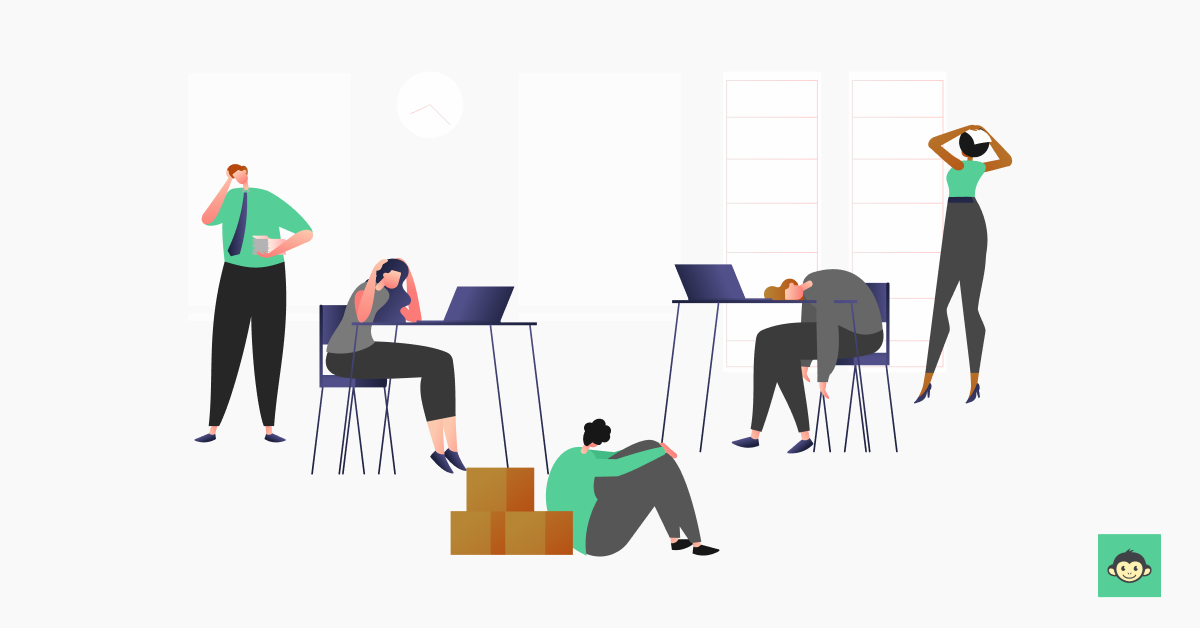
Unconscious bias, also known as implicit bias, refers to the automatic, mental shortcuts used to process information and make decisions quickly. These biases are influenced by personal experiences, societal stereotypes, and cultural background, often operating without conscious awareness.
Recruitment and hiring:
- Resume screening: Unconscious bias can affect how resumes are evaluated. For example, candidates with names perceived as ethnic or non-traditional may be unfairly judged as less competent or professional.
- Interview process: During interviews, biases may lead to preferential treatment of candidates who share similar backgrounds, interests, or appearance with the interviewer, thereby reducing diversity.
Performance evaluations:
- Subjectivity in assessments: Performance reviews can be influenced by biases related to gender, race, age, or other characteristics. Employees from minority groups might receive less favorable evaluations due to stereotypes rather than their actual performance.
- Feedback quality: Managers may unconsciously provide more constructive feedback to those they identify with, while offering vague or less helpful feedback to others, hindering their professional growth.
Promotions and career advancement:
- Promotion decisions: Biases can impact who is deemed suitable for advancement. Employees who do not fit the stereotypical image of a leader, such as women or individuals from minority groups, may be overlooked despite their qualifications and achievements.
- Mentorship opportunities: Access to mentorship and career development programs can be skewed by biases, affecting who gets the necessary support and guidance for career progression.
Team dynamics and collaboration:
- In-group favoritism: Employees might form subgroups based on similarities, leading to exclusion of those who are perceived as different. This can impact team cohesion, collaboration, and the free exchange of ideas.
- Decision-making: In meetings and collaborative settings, the voices of certain individuals might be undervalued or ignored due to biases, resulting in less diverse input and potentially suboptimal decisions.
Organizational culture:
- Inclusivity: Unconscious biases can perpetuate a workplace culture that is not inclusive, affecting employee morale, engagement, and retention. This lack of inclusivity can deter diverse talent from joining or staying with the organization.
- Policy implementation: Biases can influence how policies are formulated and enforced, potentially disadvantaging certain groups and creating an uneven playing field.
10 Tips to avoid unconscious bias in the workplace
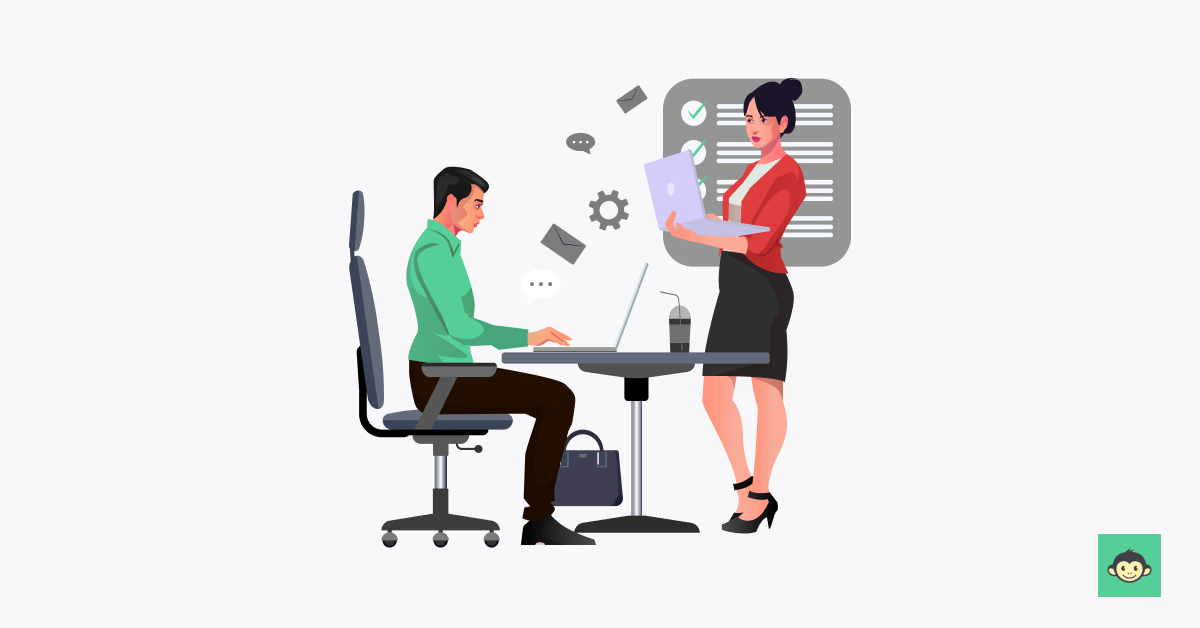
Mitigating unconscious bias in the workplace requires intentional effort and ongoing awareness. Here are ten effective tips to help avoid unconscious bias:
- Education and training: Provide regular training on unconscious bias to increase awareness and equip employees with tools to recognize and counter biases.
- Self-reflection: Encourage employees to regularly reflect on their beliefs, attitudes, and assumptions to identify potential biases.
- Diverse hiring panels: Ensure diverse representation on hiring panels to prevent homogenous perspectives and promote fair selection of job applicants.
- Structured interviews: Employ standardized interview questions for all candidates, focusing on skills and qualifications rather than personal characteristics.
- Blind recruitment: Conceal personal details like names, genders, and ethnic backgrounds during the initial stages of resume review to minimize bias.
- Evaluate criteria: Regularly review performance evaluation criteria to ensure they're objective, fair, and not influenced by unconscious bias.
- Open communication: Create a safe space for employees to raise concerns about potential biases they observe, fostering open dialogue.
- Mentoring and sponsorship: Establish mentorship and sponsorship programs to provide equal growth opportunities for all employees.
- Inclusive language: Use inclusive language in communications to avoid unintentional exclusion or reinforcement of stereotypes.
- Diverse workgroups: Build cross-functional teams with diverse members to leverage different perspectives and minimize bias.
By implementing these tips, organizations can actively promote a more inclusive workplace culture, diminishing the impact of unconscious biases and fostering an environment of fairness and equality.
Unconscious biases, deeply ingrained within human cognition, have the potential to hinder diversity, erode fairness, and impede collaboration. However, armed with understanding and knowledge, organizations can triumph over these biases.
By embracing these insights, organizations can pave the way for a transformative journey towards unbiased decisions, a harmonious work environment, and a progressive future where diversity truly thrives.
FAQs
1. What triggers unconscious bias?
Unconscious biases are triggered by our brain's need to quickly process information and make decisions based on past experiences, societal norms, and cultural conditioning. For employees, factors such as stereotypes, media representations, and personal background can activate these biases. These triggers can influence interactions and decisions, potentially undermining efforts to create an inclusive environment where every employee feels a sense of belonging.
2. How does unconscious bias differ from conscious bias?
Unconscious bias operates automatically and without awareness, affecting decisions and interactions subtly and often unintentionally. In contrast, conscious bias involves deliberate and overt prejudices or favoritism. For employees, unconscious bias can subtly undermine inclusion efforts, whereas conscious bias can lead to overt discrimination. Addressing both types of biases is crucial for fostering a workplace where all employees feel valued and included.
3. Can unconscious bias be unlearned?
Unconscious bias can be mitigated through awareness, education, and intentional action. Employees can unlearn these biases by engaging in diversity training, self-reflection, and exposure to different perspectives. While completely eliminating unconscious biases is challenging, ongoing efforts to recognize and counteract them can significantly reduce their impact, promoting a workplace culture where every employee feels a strong sense of belonging and inclusion.
4. How can individuals become more aware of their own unconscious biases?
Individuals can become more aware of their unconscious biases by engaging in self-reflection, seeking feedback, and participating in diversity and inclusion training. Tools such as implicit association tests can help identify hidden biases. For employees, increasing awareness involves actively challenging assumptions, broadening perspectives through diverse interactions, and committing to ongoing learning. This awareness is a critical step towards fostering an inclusive environment.



